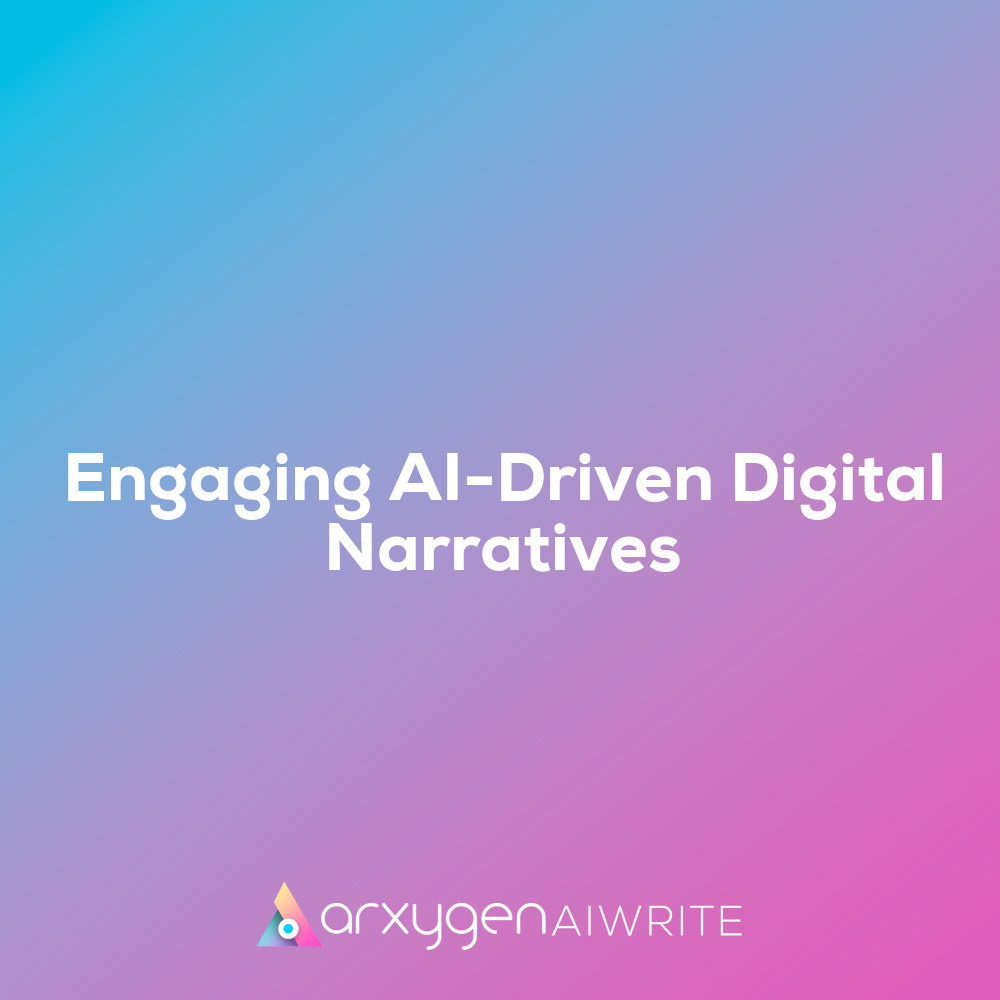Exploring the Importance of Personalised Digital Narratives in Content Creation
Personalised digital narratives are tailored stories designed to resonate with individual audience members, enhancing their connection to the content. These narratives play a crucial role in content creation, as they allow brands and creators to move beyond generic messaging, fostering a sense of relevance and intimacy. For instance, when a user receives content that reflects their interests or past behaviours, it not only captures their attention but also encourages deeper engagement with the material.
The psychological impact of these customised stories is profound; they can evoke emotions that drive action. When individuals encounter narratives that mirror their experiences or aspirations, they are more likely to feel understood and valued. This emotional resonance often translates into increased loyalty and interaction, as audiences become more invested in the narrative’s progression. Moreover, personalised narratives can lead to enhanced memory retention, making it easier for audiences to recall information associated with a story that speaks directly to them.
In a world inundated with content, the significance of personalised digital narratives cannot be overstated. They serve as a bridge between creators and consumers, transforming passive viewers into active participants in a shared story. By leveraging data analytics and user feedback, brands can craft compelling narratives that not only engage but also inspire their audiences to take meaningful actions.
Understanding the Advantages of Personalised Digital Narratives in Marketing
In recent years, numerous industries have successfully integrated personalised digital narratives into their marketing strategies. For instance, a well-known retail brand employed tailored storytelling techniques to create an immersive shopping experience for its customers. This approach not only increased engagement but also resulted in a notable rise in conversion rates. Similarly, in the travel sector, companies have leveraged personalised narratives to craft unique itineraries based on individual preferences, leading to enhanced customer satisfaction.
“Personalised narratives do more than just capture attention; they foster emotional connections, leading to increased customer loyalty and advocacy.”
These case studies illustrate that personalised narratives do more than just capture attention; they foster emotional connections. When customers see their interests reflected in the content, they are more likely to develop loyalty towards the brand. A prominent food delivery service utilised customer data to share stories about local restaurants and their chefs, enriching the dining experience while simultaneously promoting community engagement.
Moreover, personalisation has been shown to increase repeat business significantly. Customers who feel valued through tailored experiences are more inclined to return, as evidenced by a popular subscription box service that curates products based on user feedback. This not only enhances customer experience but also creates a sense of belonging among users.
Furthermore, the impact of personalised narratives extends beyond immediate sales; they play a crucial role in brand advocacy. When customers resonate with a brand’s story, they become more likely to share it within their networks, amplifying reach organically. In the tech industry, a software company shared user-generated content that highlighted customer success stories, which resulted in increased trust and credibility for the brand.
In conclusion, embracing personalised digital narratives is not merely a trend; it’s a strategic approach that can significantly elevate customer engagement and loyalty across various sectors. As businesses continue to recognise the power of storytelling tailored to individual preferences, the potential for fostering lasting relationships with customers will only grow.
Effective Techniques for Creating Personalised Digital Narratives
To harness the power of data analytics for personalised storytelling, it’s essential to first understand your audience’s preferences. By analysing user behaviour, you can identify patterns that reveal what resonates most with your target demographic. For instance, tracking engagement metrics can highlight which topics generate the most interest, allowing you to tailor your content accordingly. Additionally, segmenting your audience based on their interactions enables you to craft narratives that speak directly to each group’s unique interests.
Moreover, employing A/B testing can provide invaluable insights into what types of narratives are most effective. Experimenting with different formats, such as videos versus written articles, can help determine the optimal approach for engagement. As you gather this data, it’s crucial to adapt your storytelling techniques to reflect the evolving preferences of your audience.
Creative Storytelling Techniques for Audience Engagement
Incorporating elements of surprise or unexpected twists in your narratives can significantly enhance engagement. Consider weaving in personal anecdotes or relatable scenarios that mirror the experiences of your audience; this creates a sense of connection and authenticity. Furthermore, utilising visuals and multimedia components can amplify the emotional impact of your stories, making them more memorable.
Another effective technique is to invite audience participation by encouraging feedback or contributions. This not only fosters a sense of community but also enriches your narrative by integrating diverse perspectives. Ultimately, the goal is to create a dynamic storytelling experience that evolves alongside your audience’s interests and needs.

